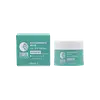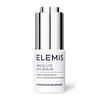What's inside
What's inside
 Key Ingredients
Key Ingredients

 Benefits
Benefits

 Concerns
Concerns

 Ingredients Side-by-side
Ingredients Side-by-side

Water
Skin ConditioningPropanediol
SolventTrehalose
HumectantNiacinamide
Smoothing1,2-Hexanediol
Skin ConditioningHydroxyacetophenone
AntioxidantArginine
MaskingAcrylates/C10-30 Alkyl Acrylate Crosspolymer
Emulsion StabilisingGlycerin
HumectantSodium Hyaluronate
HumectantPEG-40 Hydrogenated Castor Oil
EmulsifyingPanthenol
Skin ConditioningSodium Benzoate
MaskingParfum
MaskingMethylpropanediol
SolventPotassium Sorbate
PreservativeHesperidin Methyl Chalcone
AntioxidantXanthan Gum
EmulsifyingDisodium EDTA
Steareth-20
CleansingGlycine
BufferingAloe Barbadensis Leaf Extract
EmollientAlthaea Officinalis Root Extract
Skin ConditioningAlanine
MaskingCitric Acid
BufferingProline
Skin ConditioningIsoleucine
Skin ConditioningSodium Citrate
BufferingEthylhexylglycerin
Skin ConditioningKousou
Skin ConditioningChlorhexidine Digluconate
AntimicrobialDipeptide-2
Skin ConditioningPalmitoyl Tetrapeptide-7
Skin ConditioningAspartic Acid
MaskingBenzyl Salicylate
PerfumingCitronellol
PerfumingHexyl Cinnamal
PerfumingLinalool
PerfumingWater, Propanediol, Trehalose, Niacinamide, 1,2-Hexanediol, Hydroxyacetophenone, Arginine, Acrylates/C10-30 Alkyl Acrylate Crosspolymer, Glycerin, Sodium Hyaluronate, PEG-40 Hydrogenated Castor Oil, Panthenol, Sodium Benzoate, Parfum, Methylpropanediol, Potassium Sorbate, Hesperidin Methyl Chalcone, Xanthan Gum, Disodium EDTA, Steareth-20, Glycine, Aloe Barbadensis Leaf Extract, Althaea Officinalis Root Extract, Alanine, Citric Acid, Proline, Isoleucine, Sodium Citrate, Ethylhexylglycerin, Kousou, Chlorhexidine Digluconate, Dipeptide-2, Palmitoyl Tetrapeptide-7, Aspartic Acid, Benzyl Salicylate, Citronellol, Hexyl Cinnamal, Linalool
Water
Skin ConditioningGlycerin
HumectantHydroxypropyl Starch Phosphate
Sodium PCA
HumectantCentaurea Cyanus Flower Extract
AstringentPolysorbate 20
EmulsifyingSclerotium Gum
Emulsion StabilisingSodium Benzoate
MaskingDiazolidinyl Urea
PreservativeDisodium EDTA
Sodium Lactate
BufferingPotassium Sorbate
PreservativeArginine
MaskingAspartic Acid
MaskingPCA
HumectantHydrolyzed Wheat Protein
Skin ConditioningGlycine
BufferingAlanine
MaskingCaramel
Cosmetic ColorantAesculus Hippocastanum Seed Extract
Skin ConditioningSerine
MaskingValine
MaskingLinalool
PerfumingIsoleucine
Skin ConditioningThreonine
Proline
Skin ConditioningHydrolyzed Hyaluronic Acid
HumectantLavandula Hybrida Oil
EmollientParfum
MaskingAnthemis Nobilis Flower Oil
MaskingLavandula Angustifolia Oil
MaskingOsmanthus Fragrans Flower Extract
MaskingPhenylalanine
MaskingHistidine
HumectantPhenoxyethanol
PreservativeSodium Hydroxide
BufferingWater, Glycerin, Hydroxypropyl Starch Phosphate, Sodium PCA, Centaurea Cyanus Flower Extract, Polysorbate 20, Sclerotium Gum, Sodium Benzoate, Diazolidinyl Urea, Disodium EDTA, Sodium Lactate, Potassium Sorbate, Arginine, Aspartic Acid, PCA, Hydrolyzed Wheat Protein, Glycine, Alanine, Caramel, Aesculus Hippocastanum Seed Extract, Serine, Valine, Linalool, Isoleucine, Threonine, Proline, Hydrolyzed Hyaluronic Acid, Lavandula Hybrida Oil, Parfum, Anthemis Nobilis Flower Oil, Lavandula Angustifolia Oil, Osmanthus Fragrans Flower Extract, Phenylalanine, Histidine, Phenoxyethanol, Sodium Hydroxide
Ingredients Explained
These ingredients are found in both products.
Ingredients higher up in an ingredient list are typically present in a larger amount.
Alanine is an amino acid and is already found in the human body. Our skin uses alanine to build collagen, elastin, and keratin.
Arginine is an amino acid that is important for human development. Your body uses is it to produce hair keratin and skin collagen.
As a cosmetic ingredient, Arginine has antioxidant properties and can also help repair damaged skin. This ingredient is derived either synthetically or from animals.
Arginine isn't fungal acne safe when used in the presence of other lipids (fats, fatty acids, oils, esters, etc). Oils and fats occur naturally within the skin, so take caution when using Arginine if you're prone to fungal acne.
Learn more about ArginineAspartic Acid is an amino acid that our bodies produce naturally. It is an antioxidant.
Our body uses Aspartic Acid to help build collagen and elastin. It also plays a role in hydrating skin.
Disodium EDTA plays a role in making products more stable by aiding other preservatives.
It is a chelating agent, meaning it neutralizes metal ions that may be found in a product.
Disodium EDTA is a salt of edetic acid and is found to be safe in cosmetic ingredients.
Learn more about Disodium EDTAGlycerin is already naturally found in your skin. It helps moisturize and protect your skin.
A study from 2016 found glycerin to be more effective as a humectant than AHAs and hyaluronic acid.
As a humectant, it helps the skin stay hydrated by pulling moisture to your skin. The low molecular weight of glycerin allows it to pull moisture into the deeper layers of your skin.
Hydrated skin improves your skin barrier; Your skin barrier helps protect against irritants and bacteria.
Glycerin has also been found to have antimicrobial and antiviral properties. Due to these properties, glycerin is often used in wound and burn treatments.
In cosmetics, glycerin is usually derived from plants such as soybean or palm. However, it can also be sourced from animals, such as tallow or animal fat.
This ingredient is organic, colorless, odorless, and non-toxic.
Glycerin is the name for this ingredient in American English. British English uses Glycerol/Glycerine.
Learn more about GlycerinThis ingredient is an amino acid that helps build proteins and moisturizes skin. It is already present in our skin as our bodies produce them naturally.
Glycine already plays a role in helping keep our skin moisturized as amino acids transport moisture throughout our skin.
As collagen is made up of glycine and other amino acids, it is believed glycine may help our skin produce more collagen.
Learn more about GlycineIsoleucine is an amino acid that helps reinforce our skin barrier. This amino acid plays a role in creating protein for the body.
Fun fact: Isoleucine is found in meat, fish, dairy, legumes, and nuts.
Linalool is a fragrance and helps add scent to products. It's derived from common plants such as cinnamon, mint, citrus, and lavender.
Like Limonene, this ingredient oxidizes when exposed to air. Oxidized linalool can cause allergies and skin sensitivity.
This ingredient has a scent that is floral, spicy tropical, and citrus-like.
Learn more about LinaloolParfum is a catch-all term for an ingredient or more that is used to give a scent to products.
Also called "fragrance", this ingredient can be a blend of hundreds of chemicals or plant oils. This means every product with "fragrance" or "parfum" in the ingredients list is a different mixture.
For instance, Habanolide is a proprietary trade name for a specific aroma chemical. When used as a fragrance ingredient in cosmetics, most aroma chemicals fall under the broad labeling category of “FRAGRANCE” or “PARFUM” according to EU and US regulations.
The term 'parfum' or 'fragrance' is not regulated in many countries. In many cases, it is up to the brand to define this term.
For instance, many brands choose to label themselves as "fragrance-free" because they are not using synthetic fragrances. However, their products may still contain ingredients such as essential oils that are considered a fragrance by INCI standards.
One example is Calendula flower extract. Calendula is an essential oil that still imparts a scent or 'fragrance'.
Depending on the blend, the ingredients in the mixture can cause allergies and sensitivities on the skin. Some ingredients that are known EU allergens include linalool and citronellol.
Parfum can also be used to mask or cover an unpleasant scent.
The bottom line is: not all fragrances/parfum/ingredients are created equally. If you are worried about fragrances, we recommend taking a closer look at an ingredient. And of course, we always recommend speaking with a professional.
Learn more about ParfumPotassium Sorbate is a preservative used to prevent yeast and mold in products. It is commonly found in both cosmetic and food products.
This ingredient comes from potassium salt derived from sorbic acid. Sorbic acid is a natural antibiotic and effective against fungus.
Both potassium sorbate and sorbic acid can be found in baked goods, cheeses, dried meats, dried fruit, ice cream, pickles, wine, yogurt, and more.
You'll often find this ingredient used with other preservatives.
Learn more about Potassium SorbateProline is an amino-acid. It helps moisturize the skin and plays an important role in creating proteins.
Our skin uses proline as one of the building blocks for producing collagen.
In medicine, proline is used as an osmoprotectant. This means it helps prevent oxidative degradation in other drugs.
Our bodies are able to produce proline naturally, but certain conditions may inhibit this production. In that case, proline can be obtained from eating egg whites, soy protein, dairy products, asparagus, mushrooms, and seaweed.
Learn more about ProlineSodium Benzoate is a preservative. It's used in both cosmetic and food products to inhibit the growth of mold and bacteria. It is typically produced synthetically.
Both the US FDA and EU Health Committee have approved the use of sodium benzoate. In the US, levels of 0.1% (of the total product) are allowed.
Sodium benzoate works as a preservative by inhibiting the growth of bacteria inside of cells. It prevents the cell from fermenting a type of sugar using an enzyme called phosphofructokinase.
It is the salt of benzoic acid. Foods containing sodium benzoate include soda, salad dressings, condiments, fruit juices, wines, and snack foods.
Studies for using ascorbic acid and sodium benzoate in cosmetics are lacking, especially in skincare routines with multiple steps.
We always recommend speaking with a professional, such as a dermatologist, if you have any concerns.
Learn more about Sodium BenzoateWater. It's the most common cosmetic ingredient of all. You'll usually see it at the top of ingredient lists, meaning that it makes up the largest part of the product.
So why is it so popular? Water most often acts as a solvent - this means that it helps dissolve other ingredients into the formulation.
You'll also recognize water as that liquid we all need to stay alive. If you see this, drink a glass of water. Stay hydrated!
Learn more about Water